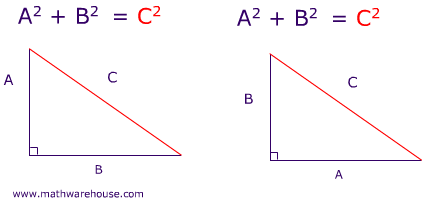A right triangle's leg is 9 and the hypotenuse is 15, what is the other leg s length?
2 Answers
The length of the other leg is 12
Explanation:
The Pythagorean theorem is:
Where "a" and "b" legs of the triangle and side "c" is the hypotenuse.
We are given that the triangles right leg is 9 and the hypotenuse is 51. Because addition is commutative, it does not matter whether we choose to assign "a" or "b" the known length; I shall choose "a":
Let
Substitute this into equation [1]:
Compute the squares:
Subtract 81 from both sides:
Square root both sides:
Discard the negative length:
The length of the other leg is 12
The second leg's length is
Explanation:

We'd use the pythagorean theorem to solve for the other leg's length. As the image suggests, we'd use the theorem,
If one leg is
If the hypotenuse is
Now we just have to find the
Plugging in the variables,

